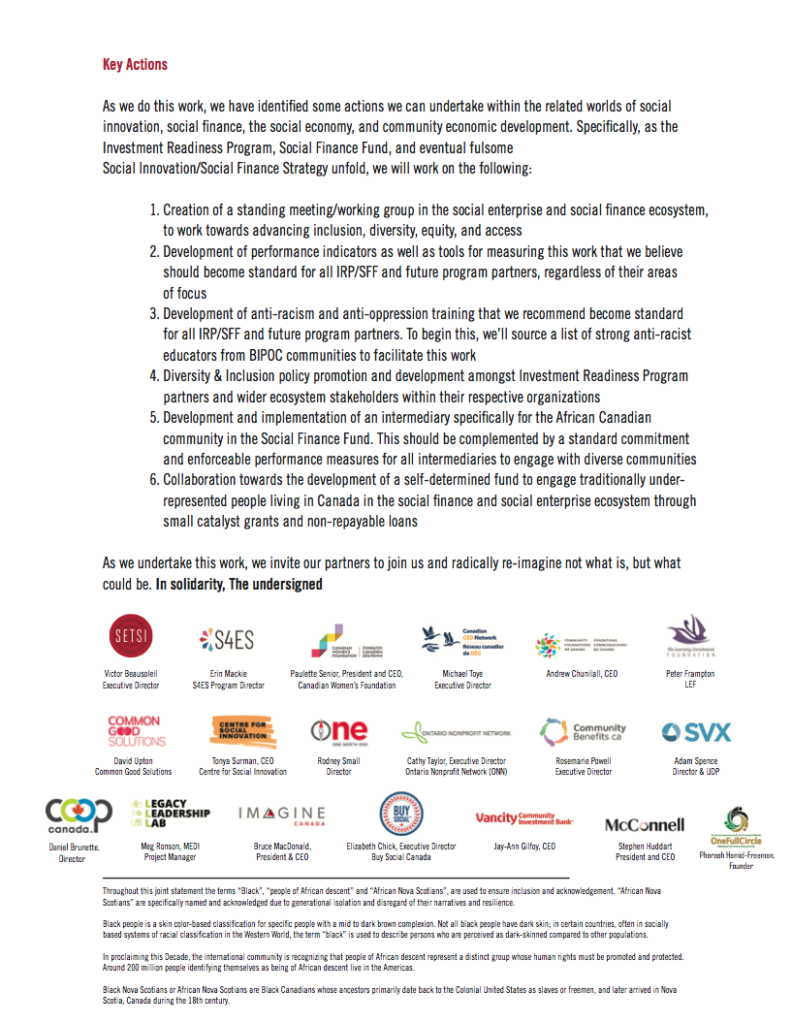By Victor Beausoleil at SETSI and Heather Simpson at S4G
There was a “Big Announcement” in the social finance world on Monday with the announcement of the Social Finance Fund wholesalers. To say that Monday’s announcement was long anticipated is a bit of an understatement; the fund was first announced in the fall of 2018 – and conceptualized many years before – the RFP for Wholesalers went out in 2021.
While touted as a big announcement – those who are interested in understanding how the $400 million in Federal dollars promised in the next five years will end up in the hands of those the fund is supposed to support still have some waiting to do. For those interested in understanding what happened to the other $355 million in Federal dollars promised – there is also apparently still some waiting to do. There is, in fact, a lot we still don’t know. The devil as they say is in the details – and Monday’s announcement was very light on those. In this case the details include understanding who the intermediaries will be, how they will be supported, and how they will engage the broader community.
There is a great deal of anticipation around the potential for the Social Finance Fund, and while the fund will undoubtedly do some great things, there are some concerns about how well the Social Finance Fund will meet its promises around social equity, and specifically around promises to make financing more readily available to women, Indigenous peoples, low-income people, Black Canadians and other racialized peoples, people with disabilities, members of the LGBTQ2+ community, official language minority communities, and recent immigrants and refugees. The leadership of the announced wholesalers does not have specific expertise engaging any of the aforementioned demographics. And if Monday’s all white panel is any indication as to how underserved communities will be represented in the fund there is definitely cause for concern.
A great deal of the success of the Social Finance Fund will rest with the selected intermediaries, what they are tasked with doing and how they are supported. At this time, we still don’t know who the intermediaries are, or what their relationships with the wholesalers will look like. As Vinod Rajasekaran from Future of Good summed up in his Most Interesting Thing in Impact video post late Monday – it is still largely a black box.
For the Social Finance Fund to live up to its commitment to the Black community, the nonprofit sector and other historically underserved communities that the Social Finance Fund has promised to support, there are things that need to happen. There was no clear commitment to any of this at Mon day’s announcement.
-
-
The Social Finance Fund, its wholesalers, and its intermediaries need to commit to the collection of disaggregated data. There needs to be public reporting of where the full $755 million in government funding, as well as the anticipated $1.5 billion in leveraged funds from private investors is invested. How much of this money is staying with the wholesalers and intermediaries? How much is making its way into the hands of members of the Black community, women, members of the LGBTQ+ community, people with disabilities, etc? How much is going to nonprofit organizations vs. for profit entities? How much is going to rural vs. urban initiatives? What sectors are being funded, and for what purpose? Measuring the success of the program will require the collection of this data. Education around how and why the information is being collected will need to take place. Non-repayable funds will need to be set aside to support Intermediaries both in the education process and the actual data collection and analysis.
-
-
-
Impact measurement needs to move beyond simple leverage and supply side measures to look at the broader impact to communities. It will be relatively easy to collect information on how well the Social Finance Fund has actualized its 2 to 1 leverage goal ($2 in private capital for every $1 of government funding), as well as how much money has been invested through the various intermediaries, but this only looks at the supply side of the equation. Impact measures for the Social Finance Fund also need to look at demand side measures to assess how well the Fund has met community needs. Leveraging the disaggregated data that is collected, impact measurement for the Social Finance Fund should explore demand side measures such as what are the investment approval/decline rates for certain sectors and demographics, and what the volume and nature of the demand is for certain sectors and demographics.
It will be particularly important to understand how impact is being quantified. For example if the Social Finance Fund invests in affordable housing development, does this count as impact for low income individuals, even if they don’t own the asset? It is of yet unclear where, or even if, this conversation is taking place.
-
Investment in market making activities is required particularly for historically underserved communities. This investment is needed in two key areas:
a. Market Readiness – There will be an ongoing need for grant capital to strengthen the investment readiness of social purpose organizations and to support capacity strengthening intermediaries. The reality is that social purpose organizations, particularly BIPOC-focused and BIPOC-led organizations have for years been under-funded, as a result they will need ongoing support in order to be ready to consider social finance. Similarly capacity strengthening intermediaries rely on grant funding in order to be able to help entrepreneurs advance along the investment readiness continuum.
b. Market Specific Financing Products – Historically underserved communities don’t just need access to financing, they need financing that is tailored to their specific needs. They are often seeking smaller loan amounts. Smaller loans are more expensive to provide for lenders and as a result often require some sort of operating subsidy for the lender. Individuals and organizations have limited to no credit history and no access to assets that can be leveraged as collateral. This means loans are riskier for lenders and de-risking tools such as loan guarantees, or first loss capital are often required. Finally, equity investing in historically underserved communities is difficult as equity requires trust and that trust often simply does not exist – particularly between the BIPOC communities and white-led equity firms.
-
- While there was a lot of congratulations being thrown around at the announcement Monday, there was also a noted lack of enthusiasm from some corners which had been left feeling silenced, confused and angry. SETSI has been part of conversations within the Black community that expressed deep disappointment and frustration at what they have seen so far. In the nonprofit sector, the sense of excitement about the fund is beginning to wane – perhaps this statement from the Ontario Nonprofit Network newsletter sums it up, “At this stage, there are no actions needed from nonprofits as the Social Finance Fund has not been deployed yet and thus organizations cannot start applying for financing.”
If the next stage in the design of the Social Finance Fund fails to address the issues listed above, and make a strong commitment to representation, it is unlikely that the fund will live up to the promises that have been made to Canadians. The Social Finance Fund holds an incredible amount of potential, but that potential won’t be realised without deliberate commitments and moving beyond the smoke and mirrors seen thus far.
Victor Beausoleil & Heather Simpson


